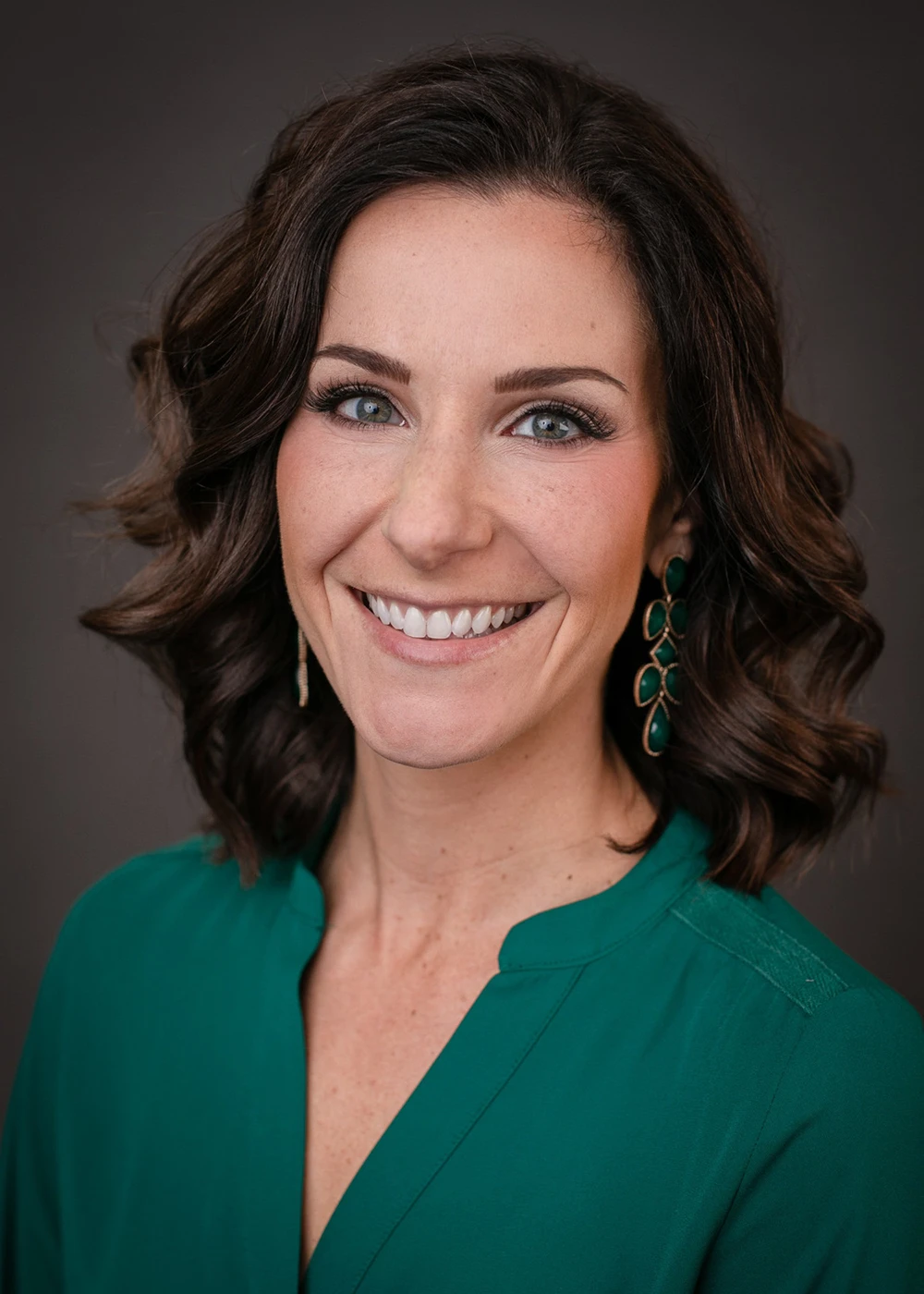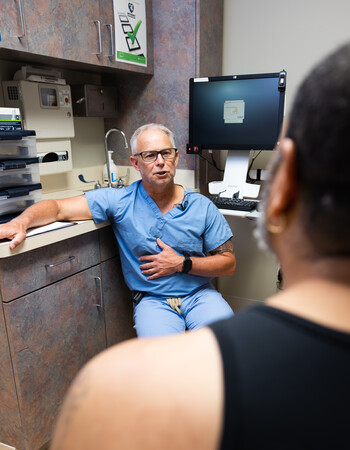





The Meaning of Care Magazine
‘Our Numbers Tell the Story’: Methodist Robotic Surgery Team Leads Region in Volumes
Published: Aug. 29, 2023After putting off waves of lower abdomen pain for months, Curtis Moreno had finally scheduled hernia repair surgery with an Omaha surgeon in February. But in the days leading up to his procedure, he couldn’t shake how anxious he felt.

In search of another provider, the 48-year-old father of four took to the internet and found Methodist general surgeon Brad Winterstein, MD.
“As soon as I met him, my comfort level was at a 10,” Curtis said. “It was like, ‘Let’s do it. This is the guy.’”
Curtis returned home five hours after his 1 p.m. robotic hernia repair at Methodist Hospital on April 28. The next day, he was moving around the house and going up and down stairs. He was cleared to return to work in May, and he’s now back to being the busy swim and soccer dad he was prior to surgery. For that, he’s got an entire team of robotics professionals to thank.
Leading Volumes
Methodist Hospital acquired its first surgical robot in 2004 and is now home to five robots and 44 surgeons trained to use them for urologic, gynecologic, colorectal, cardiothoracic, head and neck, pulmonary and general surgery – Methodist’s fastest growing surgical specialty.
According to Intuitive Surgical Inc., a global leader in surgical robotics, the hospital is Omaha’s leader in general robotic surgical volumes, yielding numbers on par with some of the most reputable robotic programs across the country.
“We’ve been doing it since the early 2000s,”Dr. Winterstein said. “And because we adopted it early, we’ve been able to really hone in on efficiencies that perhaps other facilities haven’t.”
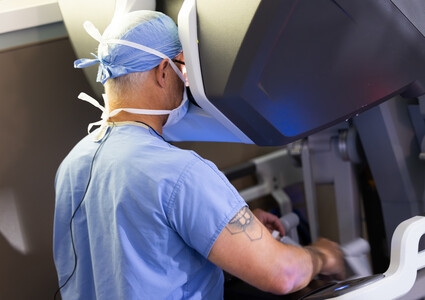
Dr. Winterstein and six other general surgeons at Methodist Hospital are on track to perform more than 1,100 general robotic procedures this year – five times the amount performed at the hospital five years ago. And at Methodist Women’s Hospital, Methodist Fremont Health and Methodist Jennie Edmundson Hospital, general robotic procedures – including hernia repairs and gallbladder removal – are also increasing.
“This has resulted in decreased infection rates and a quick turnaround in terms of being up and walking in recovering patients,” said Jennifer Durham, MSN, RN, the service leader for surgical services at Jennie Edmundson.
But successful outcomes require more than a surgeon and a giant machine with spiderlike arms and enhanced 3D visualization.
“It takes a team,” Dr. Winterstein said. "And at Methodist, it's very much a well-oiled machine."
A Team Approach
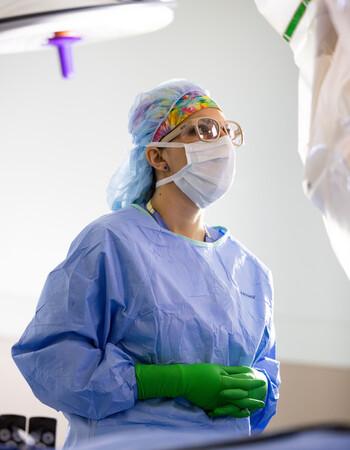
In addition to anesthesiologists and nurse anesthetists, the surgeon – who controls the robot from a console about 15 feet away from the operating table during each procedure – relies heavily on surgical technicians and nurse circulators to help ensure patient safety.
“That’s kind of the No. 1 thing,” said Bre McKamy, CST, CSFA, a surgical technician and surgical first assistant at Methodist Hospital. “I’m keeping everything sterile, and that’s to keep the patient safe. While assisting, I may also be the one who’s switching out the robot arms, taking sutures out, just about anything the surgeon needs. It’s a little more hands-on for me.”
“Surgical techs are probably one of the most vital assets to every surgery we do,” said Nathan Johnson, BSN, RN, one of eight nurse circulators on Methodist Hospital’s general surgery team.
But Johnson’s role carries equal significance.
“I sort of get things going,” he said.
Aside from documenting every detail of the procedure, he’s in charge of getting all the equipment plugged in and turned on at the right time. He also maneuvers the robot, precisely positioning it when and where necessary. His largely behind-the-scenes job actually entails some patient interaction, which isn’t required but is necessary – at least in his eyes.
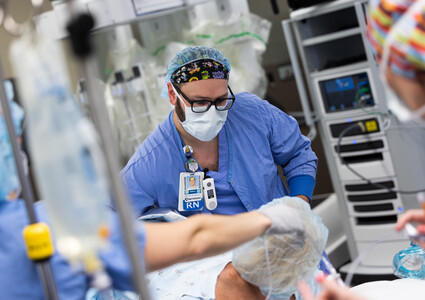
“I view myself as their guardian while they’re sleeping,” Johnson said. “A hand to hold right before surgery, when they’re scared or upset. I assure them that I’ll be advocating for them, making sure they get the best care possible from start to finish.”
What he calls “little interactions” actually make a massive difference.
“Patients who feel comfortable and confident going into surgery tend to do better,” said Pam Haschke, MSN, MBA, NE-BC, Methodist Hospital’s operations leader for surgical services. “It’s a very weird phenomenon, but patients wake up the exact same way they went to sleep under anesthesia. If they’re crying, scared, anxious, that’s how they wake up. And that’s when you tend to see higher cortisol levels, higher infection rates, longer stays. Overall, our patients do really well. And that’s not by accident.”
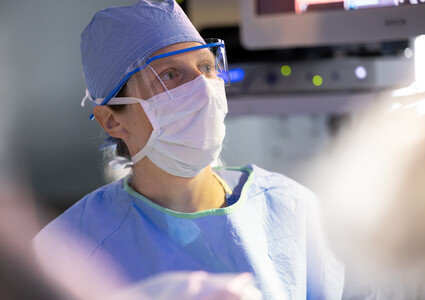
“Not seeing each patient as a medical record number,” said Laura Tracey, PA-C, a physician assistant who specializes in general surgery at Methodist Hospital and scrubs in for various robotic procedures. “Seeing them as someone who’s nervous, excited – all the things – it’s something our team does really well.”
And at Methodist, it’s strategic.
“We hire very educated and compassionate people, and it shows,” said Crystal Cover, BSN, RN, Methodist Hospital’s robotics coordinator. “My team members care so much about the patient, their teammates, their surgeons. They’re just exceptional. They really are the secret to our success.”
“And they're a big reason why I'm here,” Dr. Winterstein said. “It gives you an edge if you truly like where you work. To be able to sit down and do five or six robotic cases in a day, know that we'll have good, successful outcomes and know that patients are being provided top-of-the-line care from everyone involved, that's extremely satisfactory.
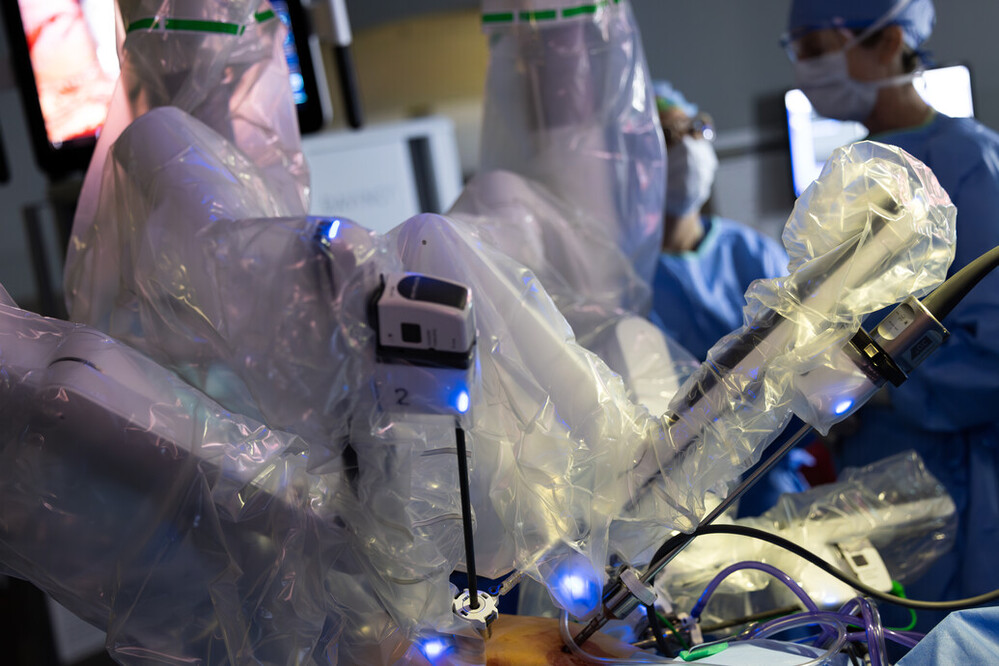
"Awesome Outcomes and Positive Experiences"
Although robotic surgery often means a minimally invasive procedure, less time under anesthesia, a shorter hospitalization, speedy recovery and minimal pain, more patients are discovering that it goes far beyond that at Methodist.
“From the time I walked in the door – filling out paperwork and cracking jokes at the front desk – to the time I walked out of the hospital, everyone was awesome,” Curtis said. “It’s normal to cross one or two people who rub you wrong. But that wasn’t the case at Methodist. I don’t know how else to say it. You guys are awesome.”
“And I think really awesome outcomes and positive experiences naturally lead to more patients,” Haschke said. “At the end of the day, our numbers tell the story of why people are choosing Methodist for their care.”
More Resources
- Read more from the summer 2023 issue of The Meaning of Care Magazine.
- Learn more about Methodist’s surgical services.
- Learn more about minimally invasive surgery at Methodist.

